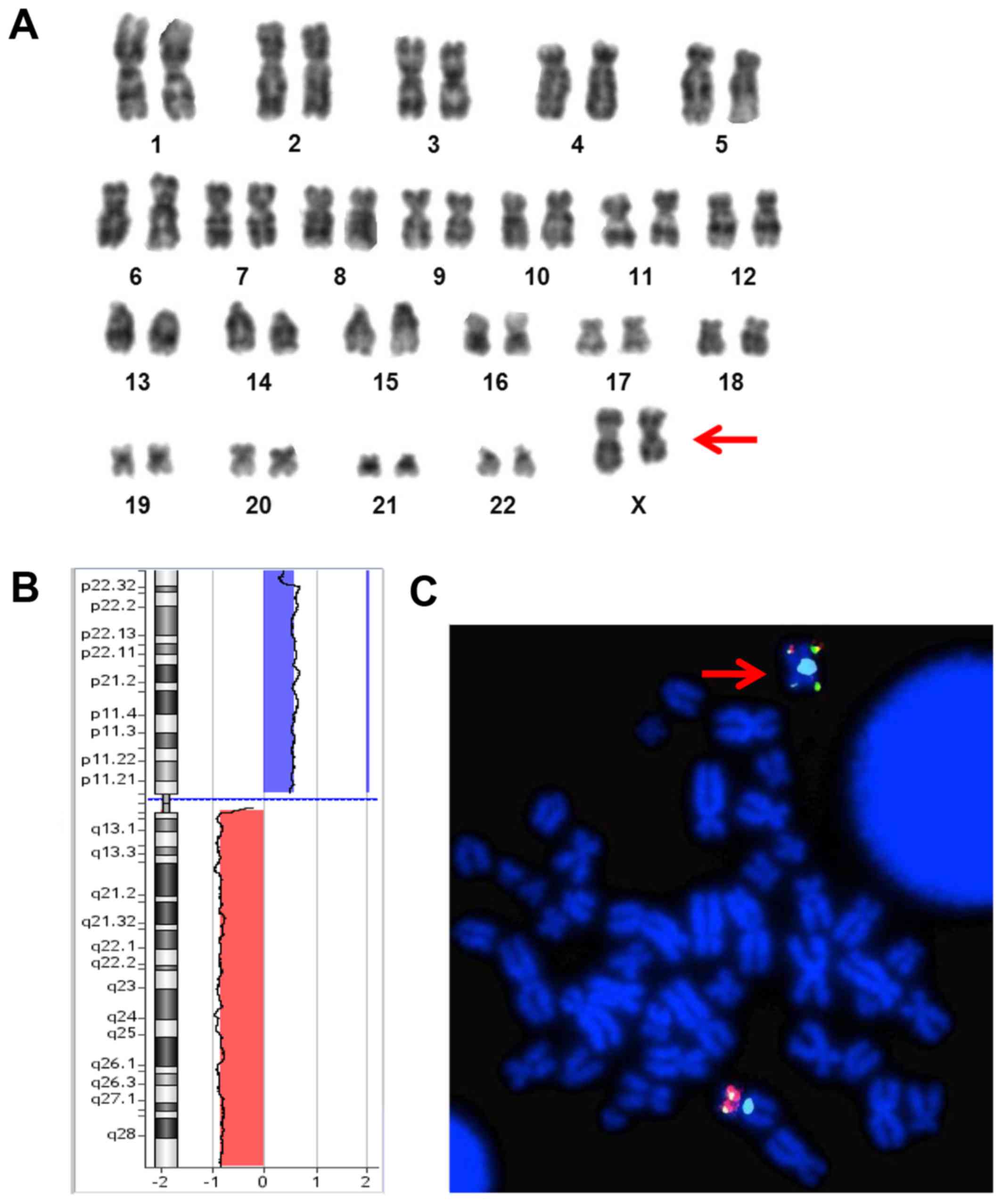Identification of i(X)(p10) as the sole molecular abnormality in atypical chronic myeloid leukemia evolved into acute myeloid leukemia
- Authors:
- Published online on: December 29, 2017 https://doi.org/10.3892/mco.2017.1543
- Pages: 463-465
Metrics:
Total
Views: 0 (Spandidos Publications: | PMC Statistics:
)
Total PDF Downloads: 0 (Spandidos Publications: | PMC Statistics:
)
Abstract
The World Health Organization classifies atypical chronic myeloid leukemia (aCML) as a myeloproliferative/myelodisplastic hematological disorder. The primary manifestations are leukocytosis with disgranulopoiesis, absence of basophilia and/or monocytosis, splenomegaly and absence of Philadelphia chromosome or BCR/ABL fusion. Overall 50‑65% of patients demonstrate karyotypic abnormalities, although no specific cytogenetic alterations have been associated with this disease. X chromosome alterations have been rarely reported in myeloid malignancies. Although Isodicentric X, idic(X)(q13) is well known in females with myelodysplastic syndromes (MDS), little data are available on X isochromosome and its pathogenetic potential in these disorders. i(X)(p10) is observed in a variety of hematologic malignancies, both myeloid and lymphoid, as a unique abnormality, as well as part of a more complex karyotype, in females and less frequently in male patients. The present report describes the first patient with aCML, with documented isolated i(X)(p10), who developed a secondary acute myeloid leukemia (sAML).










